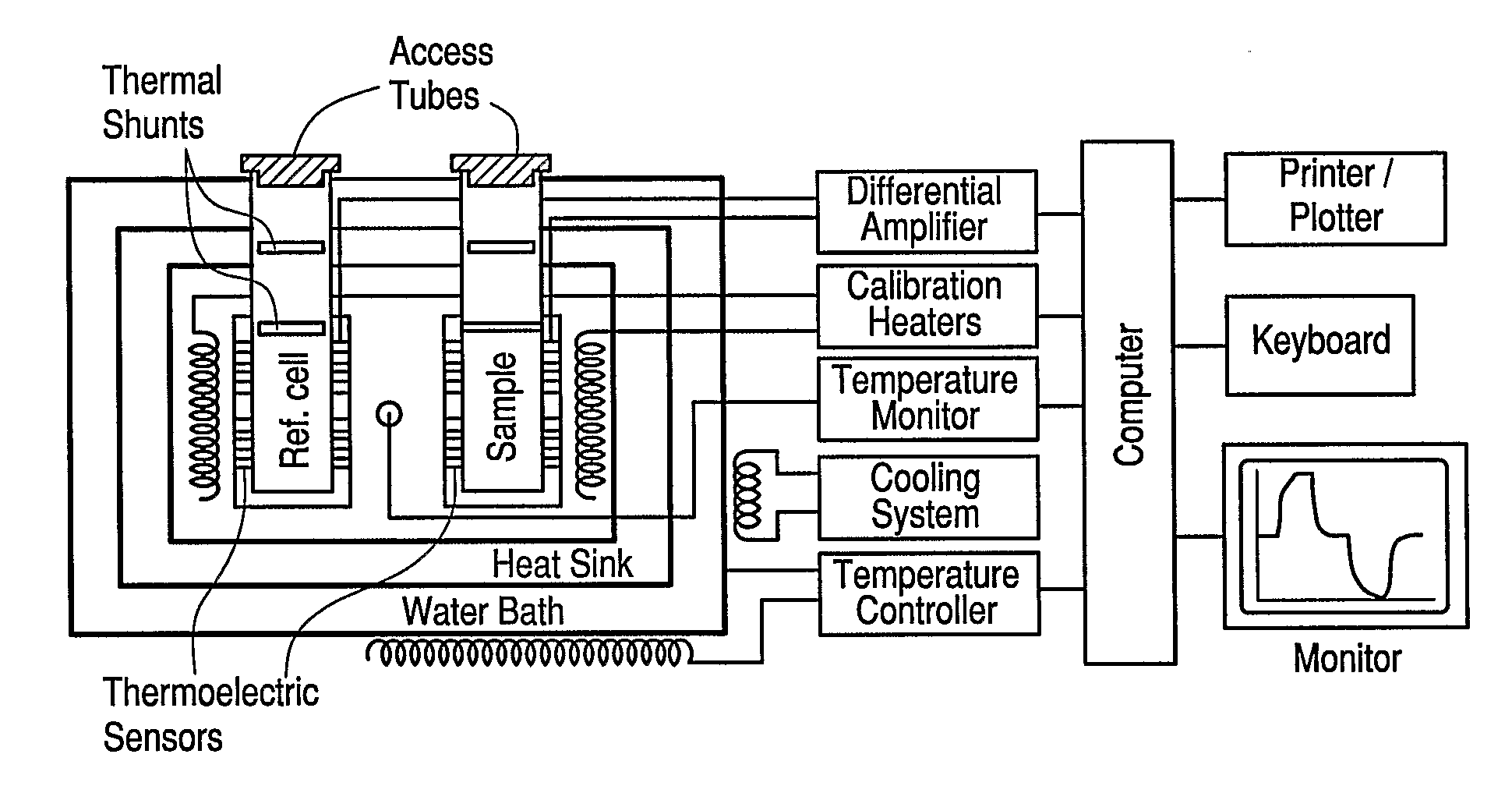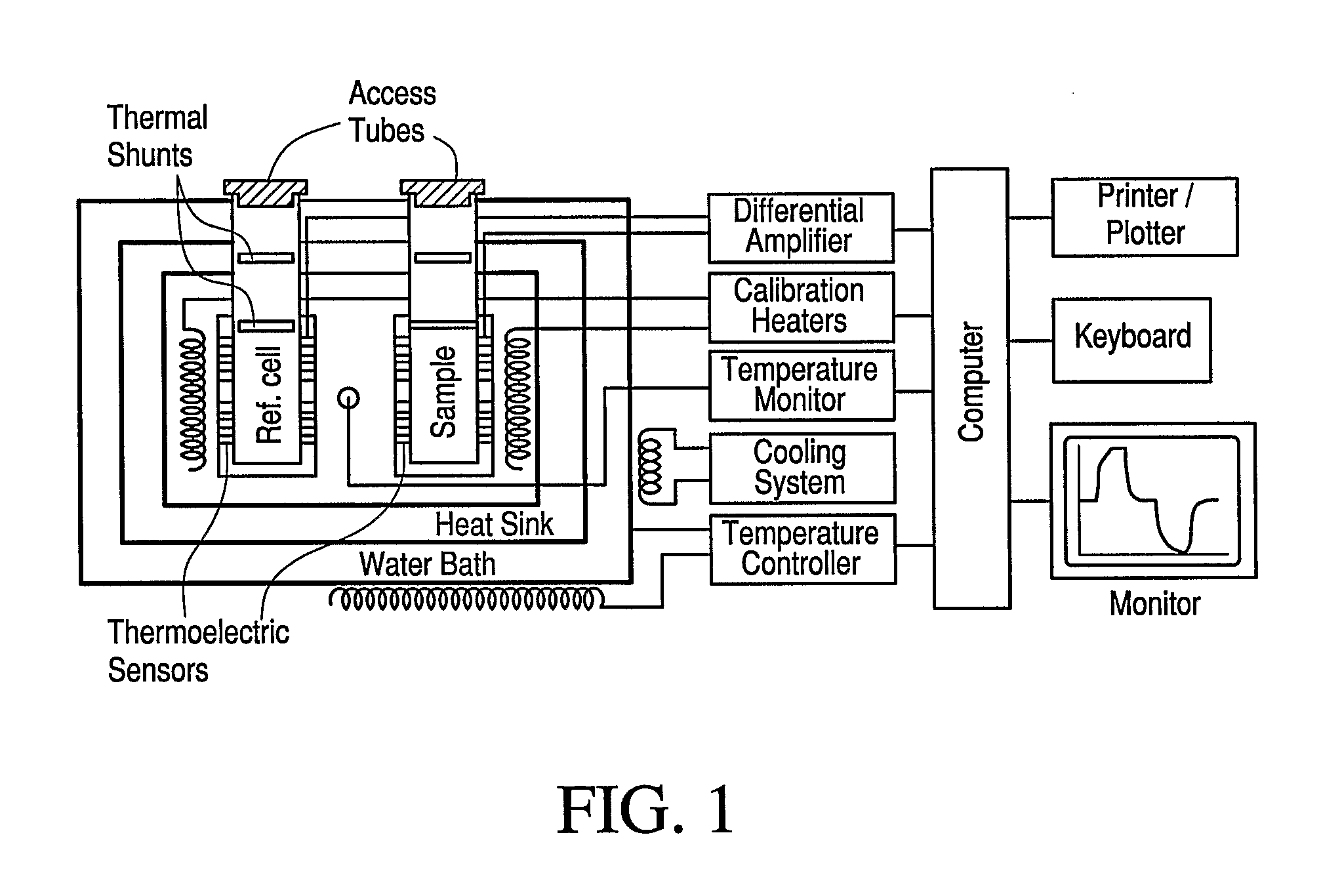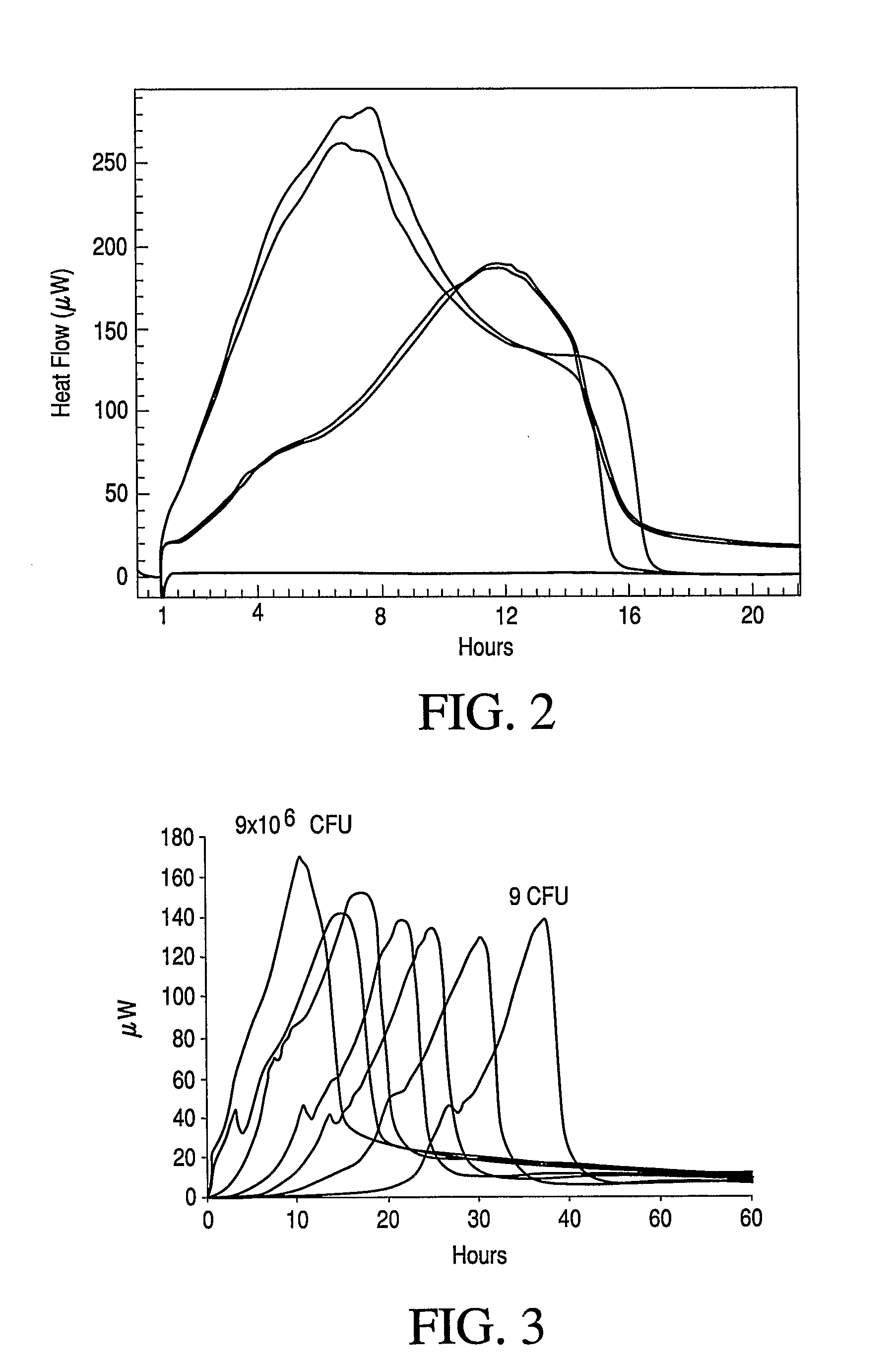Calorimetric assessment of microorganisms and use thereof
a microorganism and microorganism technology, applied in the field of microorganism and microorganism calorimetry assessment, can solve the problems of not having any information about antimicrobial susceptibility or antibiotic resistance of clinical practitioners, and the time from the collection of samples to obtaining the desired information often takes 2 to 7 days, so as to promote or suppress growth
- Summary
- Abstract
- Description
- Claims
- Application Information
AI Technical Summary
Benefits of technology
Problems solved by technology
Method used
Image
Examples
example 1
Kit for General Detection of Microorganisms in Blood Specimens
[0108]This example describes a kit that that will allow one to detect whether any of a broad array of living common microorganisms (MOs) is present and / or replicating in, e.g., blood or blood product (e.g. platelet concentrate) samples quickly and accurately. The kit detects those Gram-positive and Gram-negative aerobic and anaerobic MOs which frequently cause human bloodstream infections. In the example presented, for adults, 1 ml blood is sufficient, whereas in pediatric patients smaller volumes of blood are sufficient (0.1-0.5 ml) since bacterial concentrations in children are typically 2× to 10× higher. Simple 4 ml glass ampoules are used in this example as receptacle.
[0109]To fulfill the broad-range detection purpose, a set of general purpose, enriched, selective and specialized culture media are used in the kit's ampoules. Culture media may be pH-adjusted and supplemented with additives to facilitate or inhibit grow...
example 2
Kit for Detection of Microorganisms in Cerebrospinal Fluid
[0136]Purpose
[0137]The purpose of this kit is to detect as quickly and as accurately as possible any of the common MOs causing bacterial meningitis is present and / or replicating in cerebrospinal fluid (CSF) specimens harvested by lumbar puncture, intracisternal puncture, or puncture of a neurosurgically introduced ventricular shunt. Streptococcus pneumoniae and Neisseria meningitidis are responsible for >80% of all bacterial meningitis cases. Data supports that for these two most common MOs, the magnitudes of the maximum heat flow signals for Streptococcus pneumoniae are consistently and distinctly higher than those for Neisseria meningitidis, and that this difference is independent of initial concentration of either MO. Thus, this kit provides data for the identification of CSF MOs in addition to detection.
[0138]This kit is analogous to Example 1: Kit for General Detection of Microorganisms in Blood Specimens. The general de...
example 3
Kit for Detection of Microorganisms in Other Normally Sterile Body Fluids
[0148]Purpose
[0149]The purpose of this kit is to detect as quickly and as accurately as possible whether MOs are present and / or replicating in other normally sterile body fluids, such as synovial fluid, amniotic fluid, peritoneal fluid (ascites), peritoneal dialysis effluent, pericardial effusion, pleural effusion, bone marrow aspirate.
[0150]This kit is analogous to Example 1: Kit for General Detection of Microorganisms in Blood Specimens. The general description and specific example presented in Example 1 apply, but with the following modifications:
[0151](a) The MOs to be detected and the kit media employed are as follows:[0152](1) For aerobic and facultatively anaerobic organisms—trypticase soy broth (TSB)[0153](2) For microaerophillic and obligate anaerobic bacteria—thioglycollate broth (TGB) with hemin and vitamin K[0154](3) For Mycobacterium spp.—Middlebrook 7H9 broth[0155](4) For Legionella spp.—Buffered ...
PUM
 Login to View More
Login to View More Abstract
Description
Claims
Application Information
 Login to View More
Login to View More - R&D
- Intellectual Property
- Life Sciences
- Materials
- Tech Scout
- Unparalleled Data Quality
- Higher Quality Content
- 60% Fewer Hallucinations
Browse by: Latest US Patents, China's latest patents, Technical Efficacy Thesaurus, Application Domain, Technology Topic, Popular Technical Reports.
© 2025 PatSnap. All rights reserved.Legal|Privacy policy|Modern Slavery Act Transparency Statement|Sitemap|About US| Contact US: help@patsnap.com



